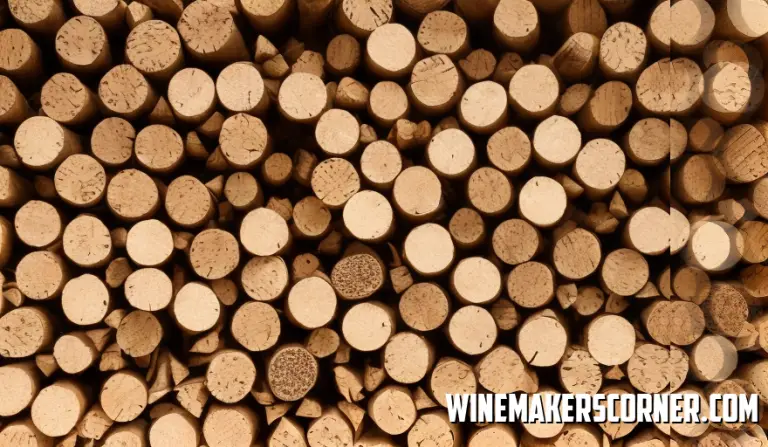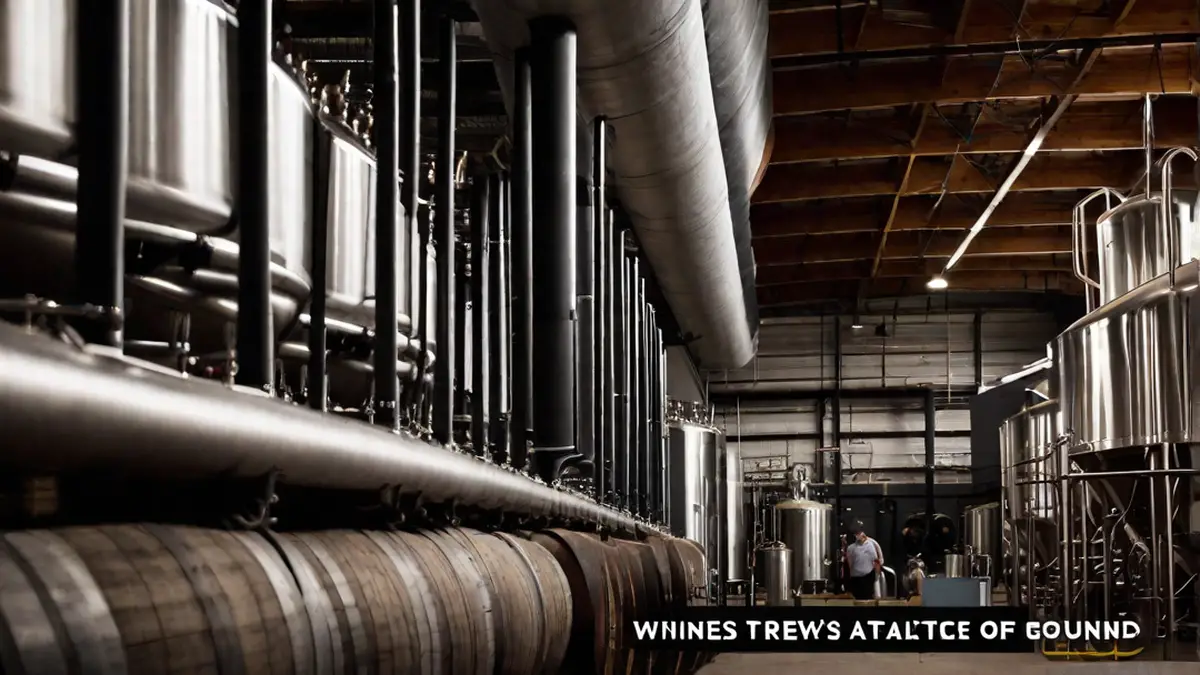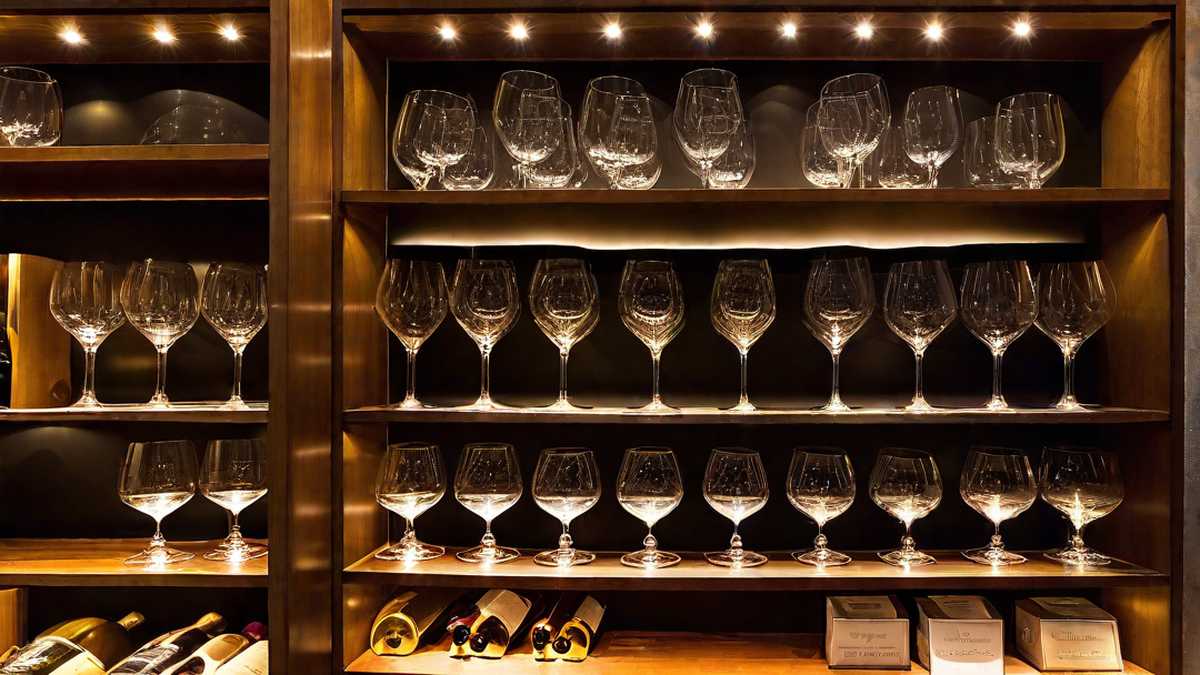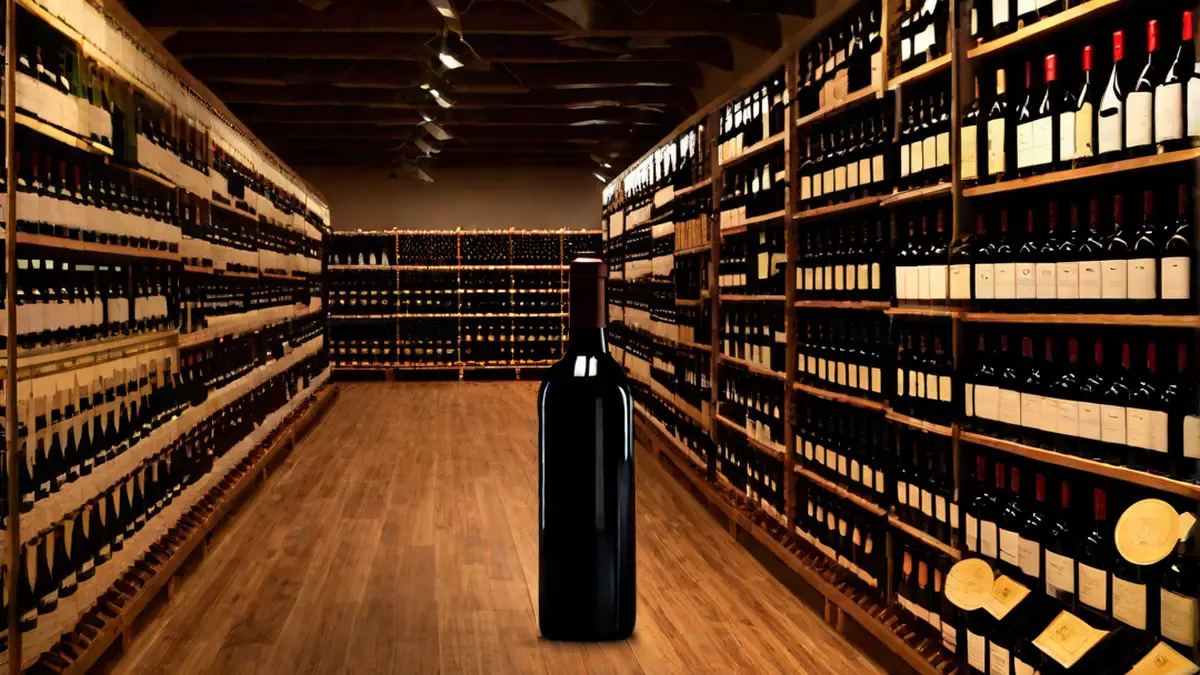As a wine lover or DIY enthusiast, you may search for the ideal cork to secure your latest creation. But fear not! Our complete guide will quickly lead you through the maze of cork sizes and materials.
Join us as we delve into the intriguing realm of corks guaranteeing your creations remain safe and sound.
Table of Contents
Cork Sizing Basics: Understanding Measurements
Don’t be intimidated by cork sizing! It’s more straightforward than it seems – all you need is a basic understanding of measurements. Let’s dive into the world of cork sizing basics. When selecting a cork, two factors are crucial: diameter and length.
Diameter refers to the width of the cork, while length signifies its height. Knowing these dimensions ensures that you choose a snug fit.
Corks come in various sizes – from tiny clients intended for small perfume bottles to larger ones designed for wine or champagne bottles – with #7, #8, and #9 corks commonly used on standard wine bottles or T corks for spirits.
To accurately measure a bottle’s opening size, use calipers or rulers across its inner diameter where the cork will sit; then, pick out a slightly larger sized one than your measurement required ensuring an air-tight seal when compressed into place. Cork selection can make all the difference when it comes to both taste and aesthetics.
Here’s what to keep in mind:
For wines that require aging potential, opt for a longer cork. This provides better protection against oxidation over time compared to shorter pins.
However, if you’re using cork for something other than wine bottles – say DIY projects or crafts – factors like usability and appearance also come into play.
Cork sheets offer endless possibilities since they can be cut into any desired shape or size.
So when selecting your corks, measure both diameter and length appropriately; factor in aging potential (if relevant); consider usage requirements such as crafting needs; and don’t overlook alternative options like sheets if necessary.
Armed with these guidelines finding the perfect cork should be a breeze!
The Importance of Proper Cork Fit
Getting the perfect fit for your cork is a big deal regarding wine bottles and crafts. Wines won’t age properly without a good fit and could lose their quality and taste. An ill-fitting pin can let air into the bottle and cause oxidation or spoilage.
That’s why cork size matters so much. If your cork is too loose, you might have leakage or unwanted air in your bottle. On the other hand, if it’s too tight, you could have trouble getting it out without breaking or crumbling it.
So before you choose a cork, measure your bottle opening accurately. Pins come in various sizes, from #000 (the smallest) to #14 (the largest). You may want a specific size or type of cork, depending on what you need it for.
For wine bottles, natural corks tend to work best because they provide excellent sealing abilities and allow wines to age appropriately. Synthetic corks are also an option but may not offer the same protection against oxidation.
Craft projects that involve creating decorative stoppers or repurposing wine bottles also require finding a suitable cork to ensure everything stays adequately sealed. Opt for multi-functional tapered pins for superior performance with different-size openings across diverse applications.
Remember that not all options have the same standards; inadequate sealing or an unfavorable lifespan may result without superior-quality materials invested.
We cannot stress enough how vital selecting the perfect cork size is for wine preservation and crafting. The effort of measuring your bottle’s opening and matching it with a compatible cork could make all the difference in maintaining freshness and elevating elegance.
Choosing the Right Material for Your Corks
Careful consideration is vital when selecting materials for your corks; not only do they need to safeguard your bottles’ contents, but they also need to add to their overall visual appeal. With countless options available, making a decision can seem daunting; however, this article examines different cork materials and help guide you toward finding the perfect fit. Natural cork remains popular among wine enthusiasts due to its elasticity and sealing properties derived from bark harvested from oak trees. Its innovative cellular structure compresses perfectly into bottlenecks – creating an air-tight seal.
However, the higher cost involved compared with other options and the risk of “cork taint” arising if not treated correctly make this option less desirable. Agglomerated corks offer a more cost-effective alternative by binding granules together using food-grade glue. These provide satisfactory sealing capabilities at lower costs than natural cork yet may not offer sufficient long-term storage durability.
Finally, composite corks provide an optimal balance between quality and affordability – blending characteristics of natural cork and higher-cost materials – making them ideal for most people seeking high-quality pins without breaking the bank.
Using a combination of natural cork particles and synthetic materials in production offers a more uniform product with fewer blemishes than purely natural cork. This blend remains affordable while providing reliable sealing performance.
Synthetic corks made from food-safe plastics or elastomers have become increasingly popular due to their durability by being resistant to breakage and mold growth.
They also remove concerns about cork taint affecting wine flavors. Despite this trend towards synthetic materials, some traditionalists believe natural alternatives hold more charm and history. Champagne corks are recommended for special occasions or sparkling beverages requiring high-pressure containment due to carbonation levels within bottles.
When choosing the material for your corks, it is essential to consider factors such as budget, intended use, aesthetic preferences, and environmental impact considerations like recyclability or biodegradability.
Standard Cork Sizes for Wine Bottles
Selecting the appropriate cork size for your wine bottles is crucial to maintaining the flavor and quality of your prized vintages. However, it can be overwhelming to sift through the numerous sizes available. Fear not! This guide examines standard cork sizes and their compatibility with various wine bottle types.
With this knowledge, you can rest assured that your wines are tightly sealed and poised to age gracefully. Initially, let’s take a look at regular-sized corks. Also known as #9 corks, they measure 24mm in diameter and 45mm in length. These corks are perfect for most 750ml wine bottles since they provide a tight fit and dependable seal.
As such, they’re highly favored by winemakers worldwide. The slightly smaller #8 cork measures 22mm in diameter and 44mm in length. They’re ideal for bottles with narrower neck openings while providing excellent sealing capabilities with less force required during insertion.
Lastly, the #7 cork is an excellent option if you specialize in smaller-scale bottling or crafting projects. Measuring 21mm in diameter and 38mm long – these slimline-sized corks perfectly fit into half bottles or containers with limited storage space.
However, suppose you aim to secure larger bottles like magnum-sized ones or specialty containers needing additional sturdy seals – then opting for extensive-sized options like #10 or #12 corks might be your best bet.
Nevertheless, if you prefer versatility when fitting various bottlenecks, tapered corks in conical shapes ranging from #000 to #14 are worth exploring options beyond just wine bottles—such as homebrewed liqueurs or oils and vinegar. To ensure you get the right cork size for your wine bottling or crafting project considering specific factors such as bottle type and intended storage duration is crucial. Natural corks are excellent – providing a tight seal, but they may lose elasticity over time due to external environmental conditions such as humidity and temperature changes.
Synthetic corks can offer more prolonged effectiveness during extended aging periods while delivering great sealing results. Ultimately finding the perfect cork size that meets your needs doesn’t have to be a hassle but requires making the right choice based on informed decision-making. Don’t let leaks or spills ruin delicious drinks – take control by understanding the range of bottle sizes and corresponding type varieties at your disposal. With this information, you can confidently choose the optimal container for preserving all your mouth-watering mixtures. Happy bottling!
Customized Corks for Crafts and DIY Projects
Customized corks have become increasingly popular amongst crafters worldwide due to their versatility and eco-friendliness. They present countless possibilities for imaginative individuals, from personalized wedding favors to innovative homemade decorations.
Choosing the right cork size is crucial for any project requiring sizing out based on your bottle type.
Measure the opening dimensions carefully before purchasing, as different bottles require various cork sizes. Using an ill-fitting model could impact the appearance of your final piece or even lead to spoilage if used for liquids.
Standard wine bottles generally require #9 cork models measuring 24 millimeters in diameter by 45 millimeters long. However, keep in mind smaller bottles, such as those designed for oils or liqueurs, may require alternative sizes like #7 or #8 because of their opening’s narrower diameters.
Shape counts for something, too – tapered and agglomerated corks are available on the market if you want to branch out into unique design options as a crafting enthusiast! What makes cork stoppers so appealing for DIY projects is their versatility. Tapered corks are perfect when used in containers with nonuniform shapes, while agglomerated options provide a polished appearance ideal for decorative endeavors. The customization options that come with these stoppers are plentiful: engraving text or images can transform them into personalized gifts that celebrate events such as weddings or anniversaries; artists have also utilized techniques like painting and staining to produce one-of-a-kind pieces of art from plain corks.
Ultimately selecting the appropriate cork size is integral to ensuring your DIY projects turn out exactly as you envisioned. With various sizes and customization possibilities available, the creative potential of using these adaptable materials knows no bounds!
How to Measure Your Bottle’s Neck Diameter
What is the key to preserving wine or achieving a particular aesthetic with your craft project? Finding a cork that fits perfectly into your bottle’s neck diameters– is no easy feat. But with our step-by-step measuring guide, you’ll be able to get an accurate measurement without any fuss.
Before diving in, gather your supplies: a ruler or caliper and an empty, clean wine bottle. With these tools at hand, place them across the opening of the bottleneck, making sure not to count any outer edges in your measurement. Once you’ve found out what size cork is needed for best results – different pins serve different purposes, after all – take some time exploring options that are available on today’s market, such as varying sizes/materials (and their respective benefits), each boasting different attributes suited either towards optimal flavor preservation or impeccable presentation potential.
Natural corks are the way for wine enthusiasts who want to preserve quality vintages over extended periods, as they help optimize aging and freshness preservation. Synthetic corks are more affordable alternatives for temporary storage or creative uses like craft-making projects. Cork size selection should be based on length and diameter considerations; longer corks provide better sealing but could become problematic when removal is required later. To find the perfect cork fit for your bottle and ensure successful wine preservation or crafting outcomes, take accurate measurements of your bottle’s neck diameter ahead of time.
Our guide will equip you with the knowledge to confidently select suitable cork types for any project or occasion seamlessly.
Troubleshooting Common Cork Fitting Issues
When you’re ready to seal up your bottles or complete a DIY project discovering cork fitting problems can be frustrating. No worries – we’ve got you covered! We’ll walk you through some typical issues so that every pin fits perfectly from now on.
First things first: oversized corks. You’ll know something is wrong when they won’t fit properly into your bottle opening despite all efforts to jam them in there! Please resist any temptation, as forcing them will likely break either bottle or cork – plus leave unsightly scrape marks along its edges! Instead of brute force tactics like these, try gently sanding downsides using fine grit sandpaper while never removing the material than necessary along its sides.
Meanwhile, if you are dealing with undersized corks that refuse to stay put, consider wrapping them with wax paper or plastic until they fit snugly into the bottleneck. Alternatively, why not purchase more giant pins and use our sanding solution? Lastly, dried-out nails can become brittle, risking breaking during insertion.
Pop those bad boys into a steamer for several minutes before usage and save yourself from any future headaches. If you need to make your corks more pliable, heat is a valuable tool to help soften them. Moving on, let’s compare tapered versus straight-sided pins: Tapered ones have a cone shape allowing for easy insertion into bottles – perfect if you’re dabbling with homemade wines or putting together DIY projects. Straight-sided corks offer a sleek appearance but require specific tools like corkers for precise installation. Additionally, it’s important to remember that not all materials perform equally well – Natural cork provides excellent sealing capabilities but may decay over time because of wine contact or changing humidity levels; Synthetic options are more resilient but don’t always offer the same classic look some wine aficionados prefer. To sum up: Always double-check before purchasing your cork size; experiment with various materials and sizes; and apply these troubleshooting tips for optimal results in your winemaking or craft endeavors! Cheers!
Storing and Caring for Your Corks
Proper storage and care of corks can go a long way in preserving the quality of your wine! With just a few easy tips, you can ensure an optimal seal that keeps unwanted spoilage at bay. So let’s get down to it and look at some critical ways to store and care for these essential wine companions. Firstly humidity is crucial – corks thrive in moderate levels between 50 and 70%.
When it’s too dry, they risk shrinking, which could damage their sealing ability; on the other hand, when excess moisture is present, mold growth becomes a significant concern. To maintain ideal conditions for your corks, avoiding areas with direct sunlight, heat sources, or dampness is best. Temperature is another considerable aspect when preserving corks. A constant temperature between 55 65°F (13 and 18°C) will help prevent fluctuations that could lead to expansion or contraction – ultimately damaging the seal over time. Keeping corked bottles in cool spaces like basements or using dedicated wine fridges is best. Last but not least – orientation! Storing corked bottles horizontally ensures that liquids stay in contact with the cork, keeping them moist and swollen – essential for maintaining an effective seal against unwanted spoilage. To keep unused pins well preserved or utilize them for craft purposes, always store them in an air-tight
container to prevent drying out over time.
Additionally, rotating corked bottles every few months is essential since this promotes equal contact between the wine and cork surface, maintaining moisture levels while preventing one side from becoming too dry. However, if you want to use corks for DIY purposes, maintaining cleanliness is critical as this helps prevent contamination or mold growth before using them in any project! Achieving this goal requires gentle washing with warm water and mild soap before storing away or using them. Ultimately: be mindful of proper storage conditions (temperature/humidity control) orientation/cleanliness when looking after your valued wine companions – their lasting effects are worth it!




